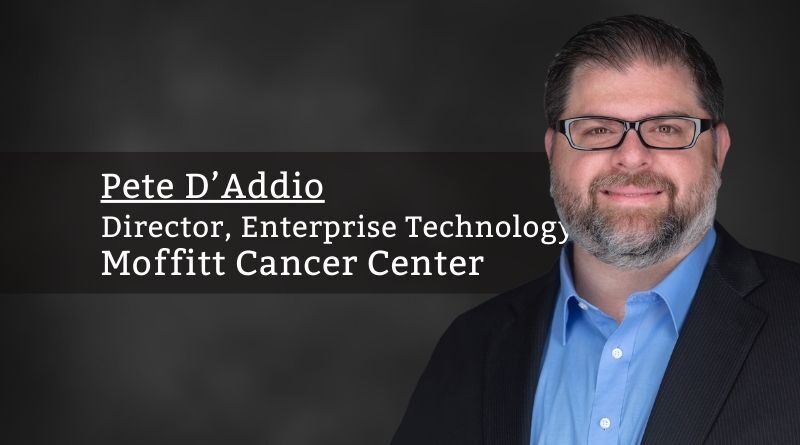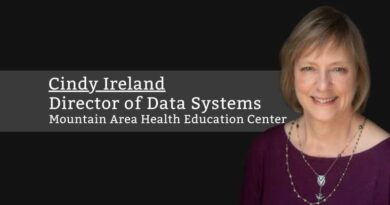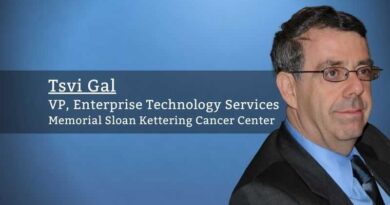Delivering Technology in a Rapidly Changing Ecosystem
By Pete D’Addio, Director, Enterprise Technology, Moffitt Cancer Center
Every day there is a new need for technology. New use cases and opportunities continue to challenge the status quo, if the status quo as we know still exists. The iPhone, now celebrating its 15th anniversary, revolutionized the world. But the newest and youngest generation does not know life without these devices and expectations of delivery of information are rapid and instant. Healthcare needs to also deliver overall in this space.
In a business sector that has traditionally been behind on the transformation maturity scale, how do you pivot to the quicker and more effective delivery of technology? Among many things that came from the pandemic, one important finding is that healthcare professionals’ understanding and awareness of technology has increased substantially. This drastic maturity forward in how technology is delivered now brings a crossroads. The maturity model now must include more clinical involvement. What do nurses need? What do doctors need? What do patients need? How can clinicians deliver patient care most effectively? What is the true lexicon they work in now? Internally, we developed a council that brought stakeholders from different areas in the organization to discuss foundational technology and roadmap. The most important deliverable is to focus on those business needs and collaborate on technologies and transformations that bring the most value. This feedback loop is essential to understand how rapidly the demands have grown for these areas, which challenges the need to deliver quicker.
Traditional Infrastructure and Operations has to give way to stronger business partnerships and understanding of needs, especially as technology has aligned so closely to patient care. With a technology focus on business, it is important to grow the depth of technology, beyond the traditional data center, endpoint, and mobile. So the new challenge is how traditional I&O teams engineer and administer these newer technologies in the same ecosphere as traditional technology. Today’s transformational journeys of healthcare organizations are full steam ahead. This is the maturity of transformation. But what is the lift needed to not just grow from the legacy systems, but to accelerate that journey quickly? A careful balance. What brings this together is a fully realized roadmap that must be matured to adopt new architectures and platforms that focus on the new deliverables and innovation needed.
Foundational technology is a building block for the delivery of services, whether it is through the traditional data center or cloud partners and connectivity and technology.
Now, an expanded focus on delivery foundational architecture leads to outcomes for today and tomorrow for delivering better patient care. But what does an organization do to provide focus on sunsetting the current and technology platforms? Years ago, it was the ability to virtualize servers; then it was the ability to build in the cloud; then it was building containers to deliver quickly. But what if an organization is still using a large number of physical servers? This is an essential challenge for I&O leaders. Here is where the partnerships between IT and healthcare stakeholders must provide focus on what is needed to move forward. Steering committees and councils are habitually the avenues to discuss this. My organization focuses on this balance and need. We have developed roadmaps with achievable timelines so delivery of new architectures can be completed in congruence with twilighting the right legacy systems.
As this journey of digital transformation endures, infrastructure and technology teams can accentuate the opportunities to deliver quickly to support patient care. The technology roadmap to move maturity must prevail to be successful. Skillsets and capabilities must also mature.
With the expansion of patient care virtually through the pandemic, one area that continues to accelerate care is the ability for home health. The different technologies for home health, such as wearables and other monitoring solutions, bring a new focus. My organization is working collectively to connect all these different devices seamlessly and securely, beyond the traditional means. Self Service and automation accelerate these capabilities, delivering critical success factors for patient care. This does not go without a challenge. How do we balance the safety and security of technology with enablement? The internal collaboration and partnerships allow for the most appropriate architecture to be created, especially with Cyber Security. New partnerships need to be formed to deliver self-service models and conjoin the interoperability opportunities up and down the stack. In the end, it is important to continue to be patient-focused.
This portfolio of technology expansion increases the need of interoperability. As my organization continues to grow and expand, the demand for additional smart devices, such as patient beds and RTLS, brings more avenues for data needs. The effort is finding the right strategic partners for foundational technology to support these additional data, considering the needs to transport this data effectively. It is imperative to solidify wired and wireless network architectures for the increased density of data, but also magnify other technologies like Bluetooth and IR. What types of devices do patients interact with during their in-person care and how to deliver these interoperability mechanisms are the new focus.
Foundational technology is a building block for the delivery of services, whether it is through the traditional data center or cloud partners and connectivity and technology. It is important to continuously evaluate the technology maturity roadmap. The rapid pace of delivery and maturity can certainly bring a loss of focus on the important milestones needed on the journey. How does traditional technology I&O balance the need for 5×9’s or better, while also supporting a growing digital transformation practice where trial and error is key to find the right solution? This is addressed with the right collaboration and expectations set.
There is an excitement about the possibilities of digital prospects. The importance of organizational vision and support drives how technology decisions bring new value. The foundational technology must support the needs of clinicians, researchers and especially patients in this digital age.



